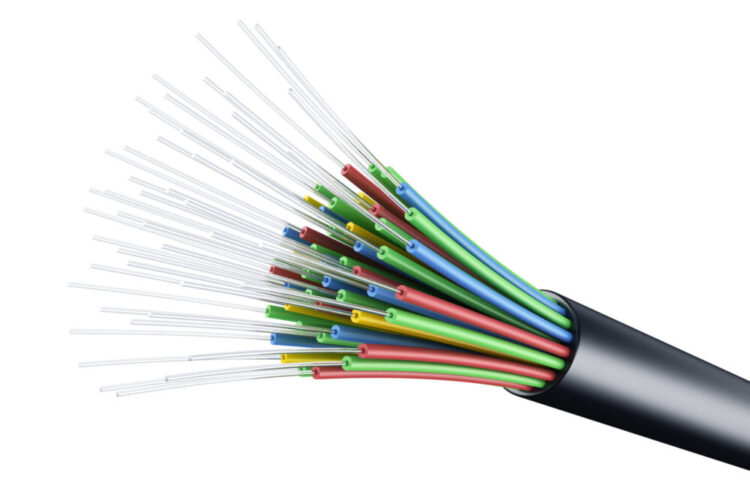Wavelength Division Multiplexing, or WDM for short, is a technique for transmitting multiple signals over an optical fiber by using different wavelengths (colors) of light. The concept is similar to how radio frequencies are used in traditional FM radio broadcasting, but the signals travel over fiber instead of the air. WDM allows us to use a single piece of glass – no thicker than a few strands of hair – to carry thousands of laser channels at once!
What is Wavelength Division Multiplexing?
WDM is a method of transmitting multiple data signals on a single optical fiber by using different wavelengths of light. WDM technology enables multiple signals to be sent through one fiber simultaneously. This increases network capacity without the need to buy or install additional cables.
WDM is a technique for sending data over optical fiber. It uses wavelength division multiplexing, which is the process of combining signals onto a single fiber by using light waves of different wavelengths. These wavelengths are the colors you observe when looking through a prism. Although fiber communications systems usually use wavelengths above the visible spectrum, so you can’t actually see the various colors.WDM utilizes light waves of various wavelengths (i.e. colors) to transmit data through an optical fiber efficiently. Because each wavelength is different, the signals don’t mix as they transmit along the fiber. WDM eliminates the requirement for multiple fibers for data transmission by combining these different colors of light onto one fiber.

How does WDM work?
The term “multiplexing” describes the process of combining multiple signals into one. With light, lenses are used to combine multiple lasers of different wavelengths. Each of the lasers in the system encodes one channel of data. The lenses then couple each of the different wavelengths into the one fiber. As you can imagine, the lens design and optical coupling are critical to the performance of the system. The signals are then all transmitted simultaneously over the single fiber. A similar lens solution is required on the receiver end of the system to demultiplex, or separate, each wavelength channel that is coupled out of the fiber and direct it to a photodetector.

WDM systems are also able to simultaneously transmit data in both directions. This means that the same fiber can be used to both transmit and receive data. As long as the transmitting wavelengths are different than the receiving wavelengths, they will not interfere with each other.
This technology permits more information to move through the same fiber compared to what would be possible without WDM. This allows for greater bandwidth, better utilization of fiber, lower fiber and connector costs, and reduced system weight.
The Advantages of Wavelength Division Multiplexing
WDM is used in many telecommunications applications, including telephone and internet access, as well as video over fiber and datacenter Ethernet links.
WDM is advantageous because it reduces hardware costs, increases flexibility, and reduces latency compared to serialization – all while consuming less power than other technologies do. With WDM, existing fiber cables can be used for higher bandwidth links by simply changing out the single-channel transceiver hardware with WDM transceiver hardware.
The ability to use a single fiber for many applications is a huge advantage.
Instead of having to lay down multiple cables or run a ribbon fiber cable, you can just run one fiber and then use WDM to transmit your data across it. These single fiber WDM systems have much lower connector size, weight, and cost. This is particularly advantageous in flight applications, automotive environments, and medical systems where low size and weight are critical to system performance. The single fiber is also extremely advantageous when the cable needs to move and rotate, as a single fiber is much more flexible than a bundle of fibers or a ribbon cable. Therefore, WDM is often used in industrial robotics and medical display systems in operating rooms.

WDM removes the need for multiple fibers to carry data.
WDM is a single fiber solution that uses different wavelengths of light to carry data. This allows for higher capacity and lower latency than other methods of transmitting information over long distances because there is no need to serialize the data to transmit on a single channel.
Using WDM to reduce the number of fibers also reduces the number of fiber connectors needed at each port. This can lead to a huge savings in cost, size and weight.
Implementing WDM in your system
When considering the implementation of WDM technology, it is crucial to select the appropriate solution tailored to your specific requirements. Consult with reputable providers of WDM equipment, such as Inneos, and ensure compatibility with your existing infrastructure.
Work closely with experienced engineers to optimize your fiber interconnect network for WDM deployment. Through careful planning and efficient routing, you can ensure seamless integration and optimal performance. Visit our Resources and Training page to learn more about implementing WDM fiber in your design.
Conclusion
WDM is an important technology that allows us to use a single fiber to simultaneously transmit many high-bandwidth channels. There are many applications that need the increased performance and lower size, weight and cost of single-fiber cable WDM systems. It has many advantages including cost savings, increased bandwidth per fiber, higher flexibility, and more reliable transmission.
